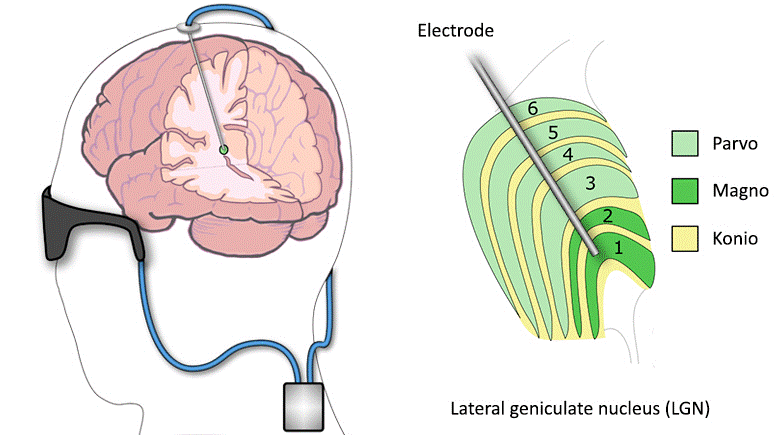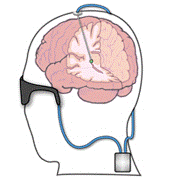Hieu T. Nguyen, Siva M. Tangutooru, Corey M. Rountree, Andrew J. Kantzos, Faris Tarlochan, W. Jong Yoon, and John B. Troy, Northwestern University

We consider the proposal that a visual prosthesis which interfaces with the thalamic visual center of the brain is advantageous for restoring vision to patients who have lost sight through glaucoma, the leading cause of blindness for which no satisfactory medical treatment exists. Glaucoma is a group of neurodegenerative disorders that affects the retinal ganglion cells (RGC) of the eye, which link its output to subsequent visual processing centers of the brain. Of these centers, the lateral geniculate nucleus (LGN) located in the thalamus is the primary target for RGC signals, and because of its structure and physiology, may be an ideal target for a visual prosthesis for patients blind from diseases or injury affecting the retina or optic nerve.
Replicating the retina’s output artificially is difficult because different components of vision (e.g. OFF and ON signals, color, motion, spatial detail) are encoded by different groups of RGCs that require activation appropriately. In the retina these cells are intermixed and packed tightly, especially for central vision, while within the LGN their counterparts are separated in its retinotopically organized six layers and distributed according to RGC density. This separation of information and magnification of the macular image provides a simpler substrate with which to interface electrode arrays to stimulate visual neurons naturalistically. The major drawbacks for a thalamic when compared to a retinal prosthesis are the need for two electrode arrays, one for each hemisphere to stimulate the full visual field, and the need to insert the arrays deep into the brain. The current review describes the advantages and challenges of creating a prosthethic device that would safely and efficiently stimulate LGN neurons electrically to restore vision.
Keywords: Electrical stimulation, glaucoma, lateral geniculate nucleus (LGN), thalamic visual prosthesis, vision repair

